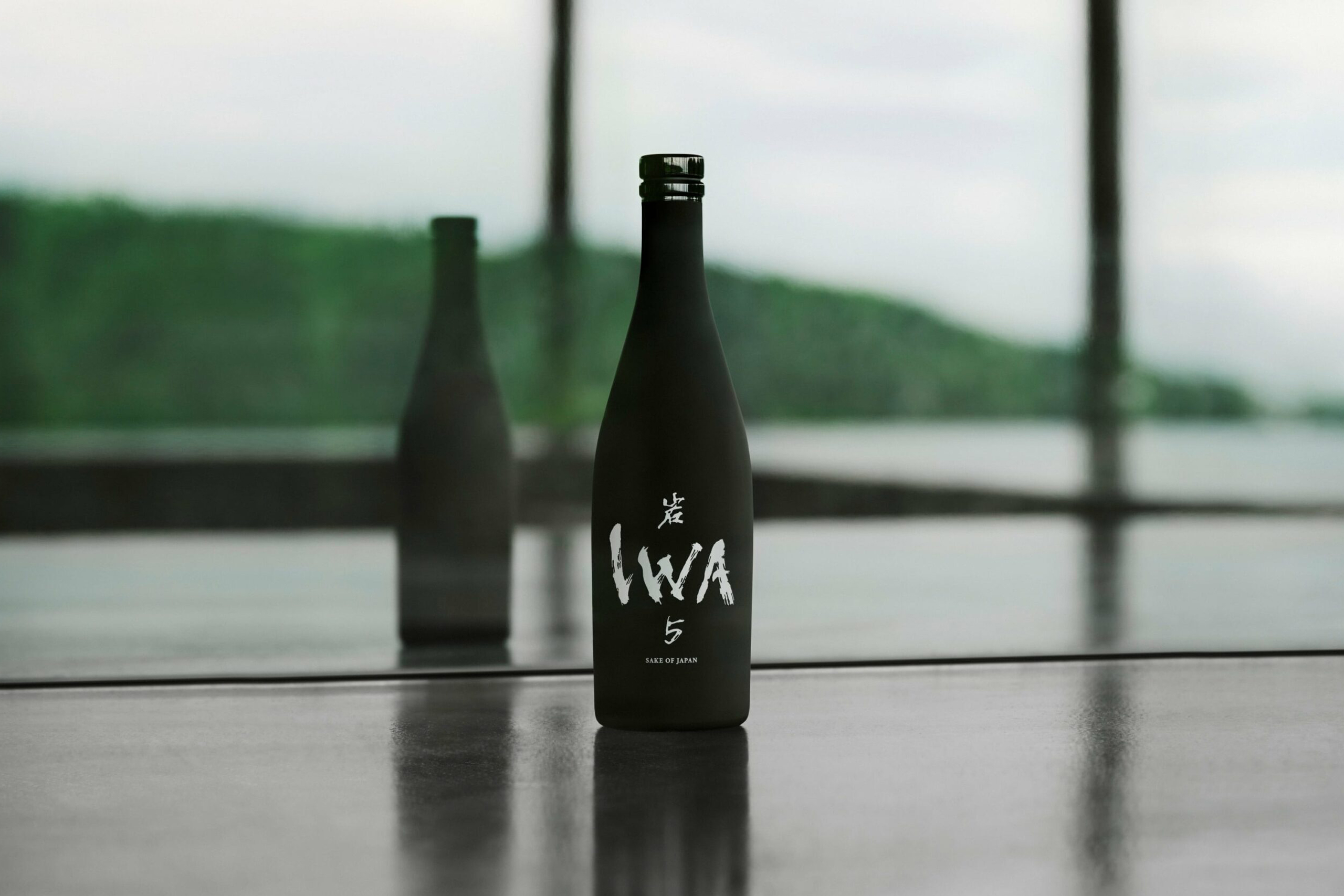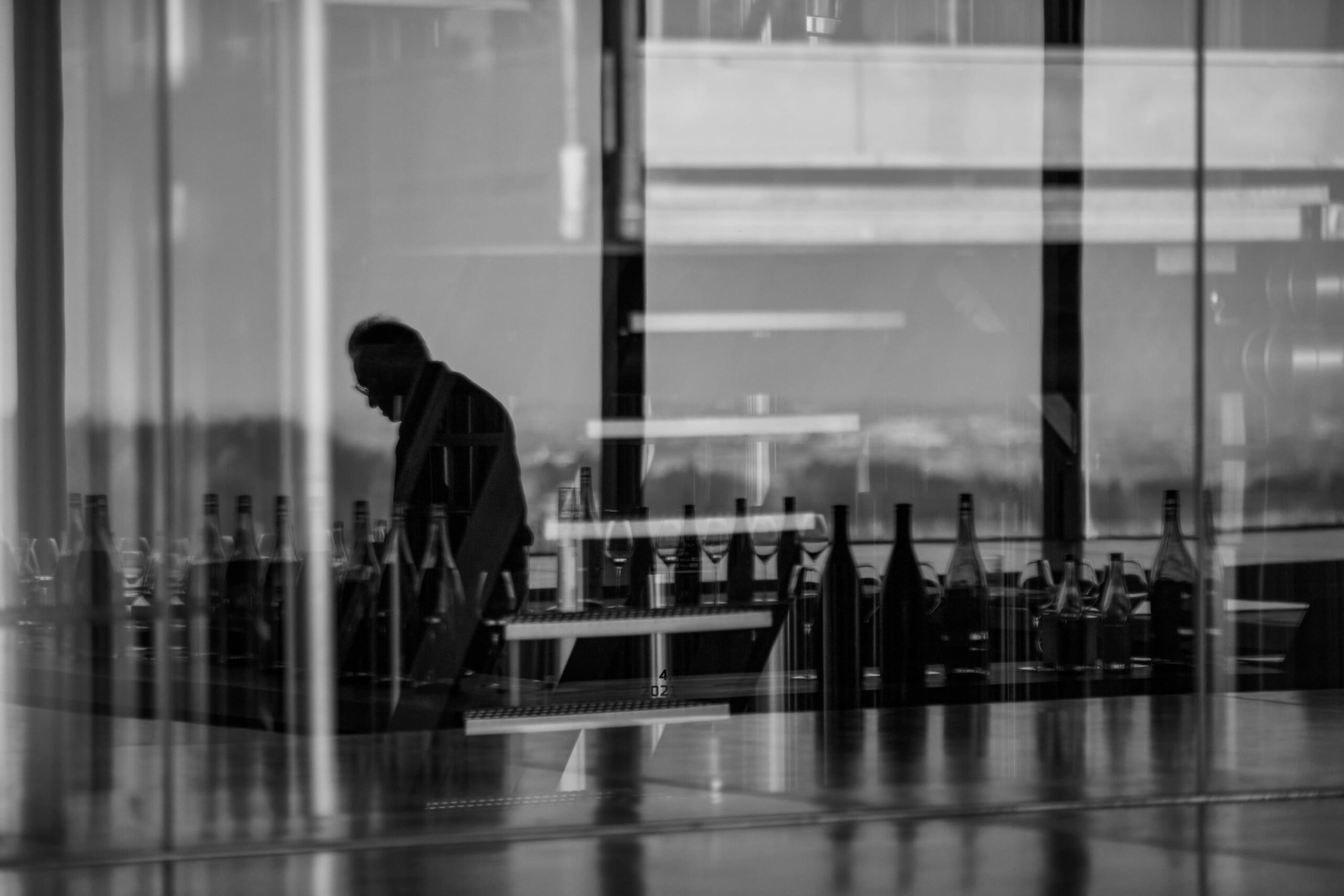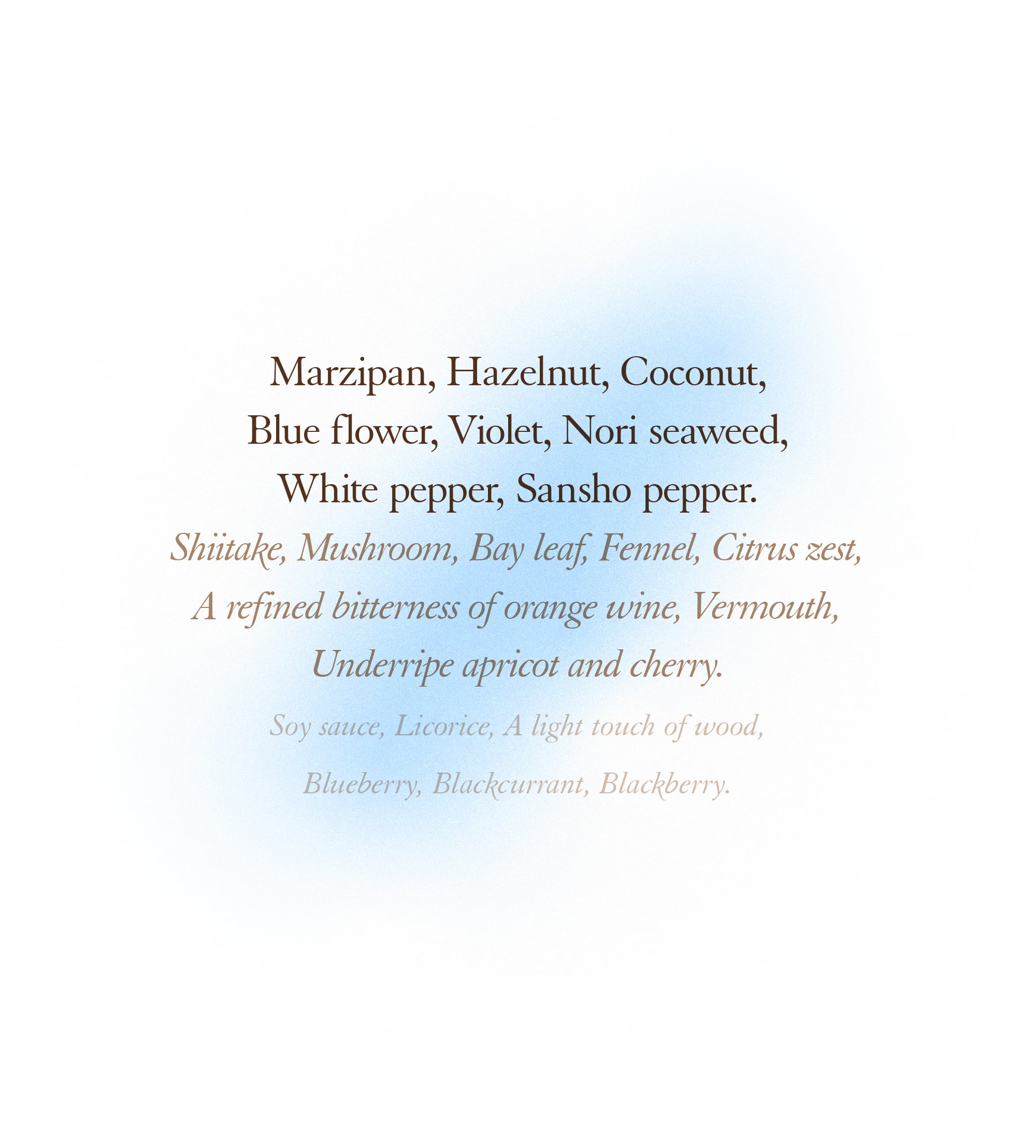

First and foremost, the global expression of classical Sake is shifted to a greater equilibrium between nose and palate. Palatability is key, actual IWA 5’s main asset. A major emphasis is put on the finish. The aftertaste lingers and remains the memory of the Sake, satisfying, refined and smooth: a unique combination of vibrant aromatics, of the sweet, the bitter, the sour, the spicy and the umami.

Our new Assemblage 4 took Founder-Maker Richard Geoffroy on his own journey into the soul of IWA – finally making it at the Kura in Toyama, in the serenity of the doma symbolically positioned between the rice fields and the brewing vats. IWA keeps pushing the envelope. The three-weeks of the Assemblage process resulted again in evolution, one further exploring the direction developed from A1 through A4, a step completed in the spirit of singularity, sophistication and intricate layering.
The nose
As the sake breathes in the glass, time pauses for the emergence of marzipan and lotus root. While intensifying, the initial aromas are completed by vibrant marine undertones, followed by coconut and darker tones of hazelnut and shiitake. A profound flourish of violets is a surprising conclusion.
The palate
In total coherence with the nose, the palate embarks on a ride of fluid transitions. It dances through an airy softness, a playful fusion of fruity, floral, and subtle maritime notes. This sophisticated dissolve reaches its crescendo through a lingering aftertaste, highlighting IWA’s signature of white and Sancho peppers.

Richard Geoffroy, IWA Founder-Maker
From 1-2° and above
Definitely tightens the Sake up. Starting from 1°/2° and above is a subtle play of textures, with an element of gentle soft fruitiness – stone fruit, cherry.
35-37°C Hitohadakan 人肌燗
Sensuous. Immaterial and fluffy, gets back together through the aftertaste. Candied almonds.
45°C Jokan 上燗
Amazingly soft. The viscosity and silky texture are fusional. Mint, aniseed, camphor.
55°C Tobikirikan 飛び切り燗
A glorified character of rice. Rounded, thicker and grainy. White pepper.
IWA 5 has an intriguing capacity to pair with a great array of foods: the Sake has sort of a flexibility to invariably adjust itself right to the level of the food, sensibly, from the delicate to the robust, from light to dark flavors. IWA 5 can pair with successive dishes throughout one single meal.

Five different yeast strains, including experimental ones. The selection of yeast strains is based on their complimentary individual natures: high and low tone aromas, greener aromas, complexity, umami, sourness, viscosity or texture.
Predominantly traditional Kimoto – bringing extra depth.
Making the Assemblage better balanced, richer and more complex.
No alcohol added. Rice polishing rate – Seimaibuai – is 35% as all individual components are 35%.
The entire production has been pasteurized.
Rice, Water, Koji
113 kcal / 100ml
